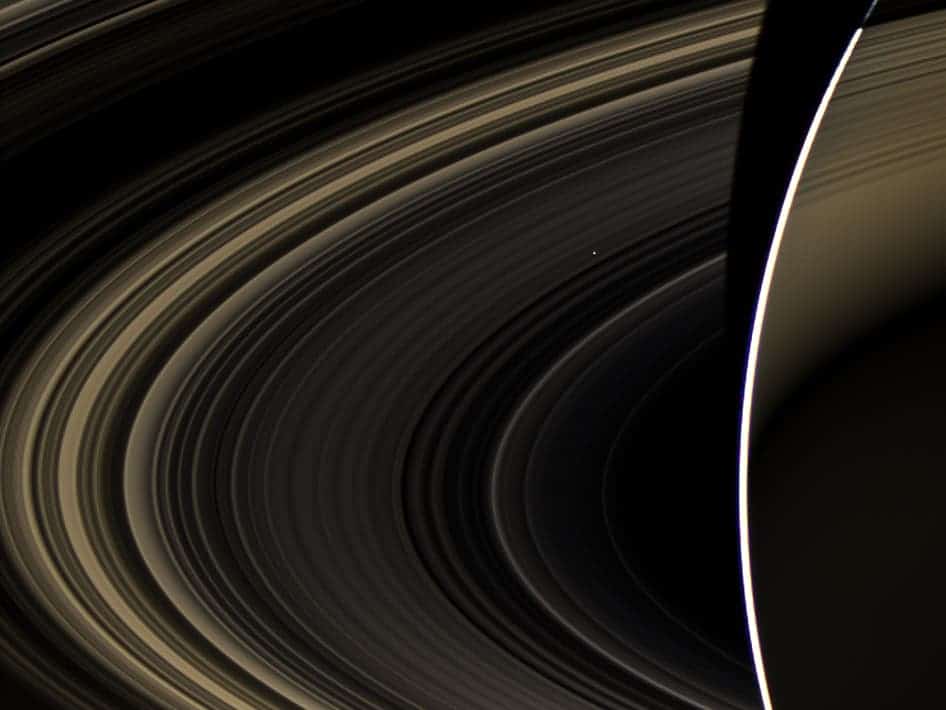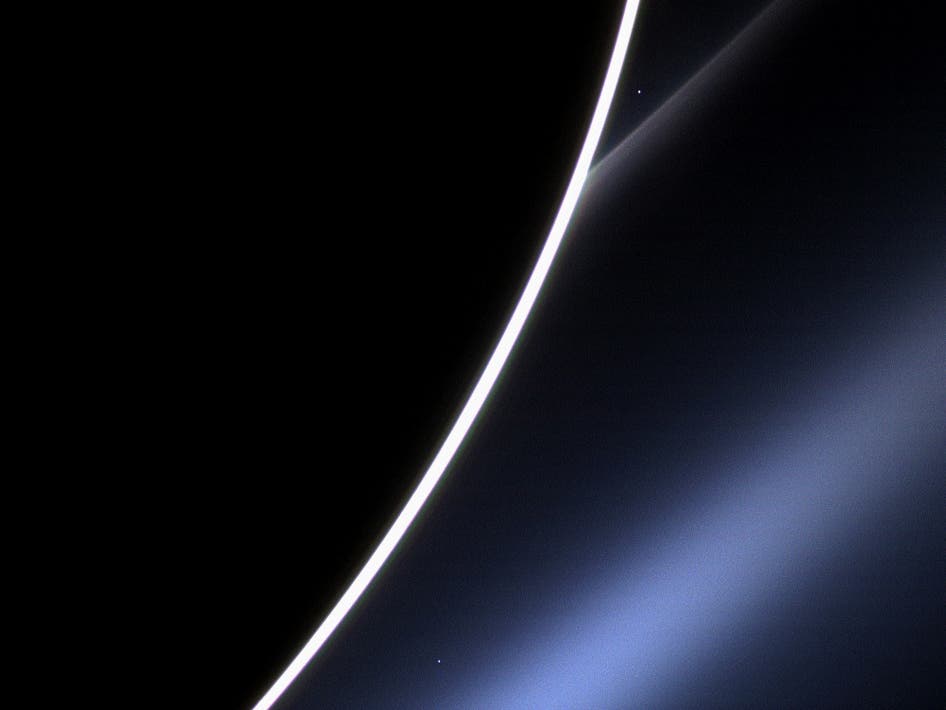
This is a true-color picture of Saturn and Venus. The bright arc is the limb of Saturn. A portion of the rings is seen in silhouette against the face of Saturn, which itself is faintly illuminated by sunlight scattered off the rings.
I’m an absolute fan of the Cassini spacecraft – this is hands down my favorite mission. I mean, it’s been providing us incredibly valuable information for years now, in a very interesting area of our solar system, the Jupiter-Saturn area. This mission is one of the main reasons why we now believe places like Europa to be the most likely place to host life in our solar system. Now, NASA’s Cassini spacecraft spied the bright, cloudy terrestrial planet, Venus.
Venus, the long lost brother of our planet; even with an atmosphere of carbon dioxide that reaches nearly 900 degrees Fahrenheit (500 degrees Celsius) and a surface pressure 100 times that of Earth’s, it is considered a twin to our planet because of similar masses, sizes, rocky compositions, etc. The reason why Venus is so bright and spectacular to look at is that it’s covered in thick sulfuric acid clouds.

Images taken using red, green and blue spectral filters were combined to create this natural color view.
Cassini took many spectacular photos so far, and this ones aren’t the exception. Last November, because the Cassini spacecraft was in the shadow of Saturn, it was able to “look” in the direction of Venus and the Sun, taking a backlit image of Saturn and its rings in a particular viewing geometry called “high solar phase. This relative position reveals details about the rings and Saturn’s atmosphere that cannot be seen in lower solar phase.
The Cassini-Huygens mission is a cooperative project of NASA, the European Space Agency and the Italian Space Agency. For more information, you might want to visit its website and the JPL website.
Via NASA.









